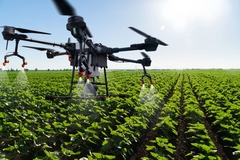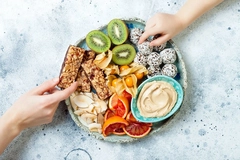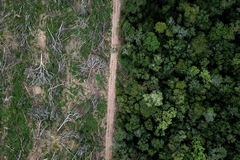Alland & Robert unveils organic karaya gum to bolster texture
22 Jul 2020 --- Karaya gum, a natural ingredient used in food applications, is now available certified organic from the France-based company Alland & Robert. The natural gum from wild trees can improve texture while increasing dietary fiber as a prebiotic. Through processing methods developed by the natural gum specialist Alland & Robert, karaya gum boasts an expanded range of functionality, while presenting clean label opportunity and storytelling potential.
“The organic market for natural gums is increasing fast and we received many requests from customers for an organic karaya gum. This is why we worked with our African suppliers for organic certification,” Violaine Fauvarque, Marketing Manager at Alland & Robert, tells FoodIngredientsFirst.

Karaya gum can be found in a wide variety of products such as desserts, donuts, savory sauces, ready-to-eat meals, ice creams and biscuits, as well as dietary products.
“There are already thousands of day-to-day products formulated with karaya gum worldwide. Nowadays, in the food industry, karaya gum is particularly used in frozen foods, sauces and desserts because it is an efficient and natural texturing agent,” notes Fauvarque.
“Karaya gum can answer specific needs regarding the formulation of coatings, fillings, dressings, desserts and emulsified sauces,” she adds.
 Karaya gum is particularly used in frozen foods, sauces and desserts because it is an efficient and natural texturing agent.Importantly, key functional properties can be achieved without any chemical modification. A physical treatment developed by Alland & Robert reduces the total plate count of hydrocolloids while preserving all their functional properties as a texturing and bulking agent, dietary fiber, adhesive compound and viscosity control agent with water retention and suspending properties.
Karaya gum is particularly used in frozen foods, sauces and desserts because it is an efficient and natural texturing agent.Importantly, key functional properties can be achieved without any chemical modification. A physical treatment developed by Alland & Robert reduces the total plate count of hydrocolloids while preserving all their functional properties as a texturing and bulking agent, dietary fiber, adhesive compound and viscosity control agent with water retention and suspending properties.
“Karaya gum’s effect on textures is significant, even at low concentrations. It is 100 percent natural and vegetarian, as well as being free from pesticides and GMOs. It contains no gluten and is high in fiber,” adds Fauvarque.
The manufacturing of karaya gum is based on a concept of flash heating, which gives Karaya gum a desirable microbiological quality. This process assures a homogenous temperature within the treated gums. This process has opened new horizons to Karaya gum. It is now used alone or in association with other hydrocolloids.
“Alland & Robert has been increasingly questioned by food manufacturers about karaya gum because texturing needs are at the heart of the consumers’ experience,” says Fauvarque.
Storytelling appeal
Karaya gum has a rich history for its traditional uses, offering manufacturers fodder for storytelling appeal. Also commonly named “Sterculia,” the gum is hand-collected by the incision of the stems and branches of sterculia trees growing in dry and rocky areas, mainly in specific regions of Africa, especially in Senegal and Mali, and India. It has been used for many centuries – and is still very common – in traditional African and Indian cooking.
“Storytelling is going to be absolutely crucial to success in the market going forward,” notes Lu Ann Williams, Director of Innovation at Innova Market Insights, speaking on the market researcher’s naming of Storytelling as the no. 1 Top Ten Trend for 2020.
“Over the last few years, we have seen an increasing interest from the consumers for the food they eat, and that is a good thing. Karaya gum is definitely a part of new formulation, thanks to its versatility and the fact that it’s plant-based, a natural and safe additive, and source of prebiotics,” concludes Fauvarque.
Karaya gum is classified as E416 by the European Food Safety Authority (EFSA) additive referential. According to the EFSA and the Joint FAO/WHO Expert Committee on Food Additives (JECFA), there is no safety concern for Karaya gum and there is no need for a numerical ADI (Acceptable Daily Intake) for Karaya gum.
By Missy Green













